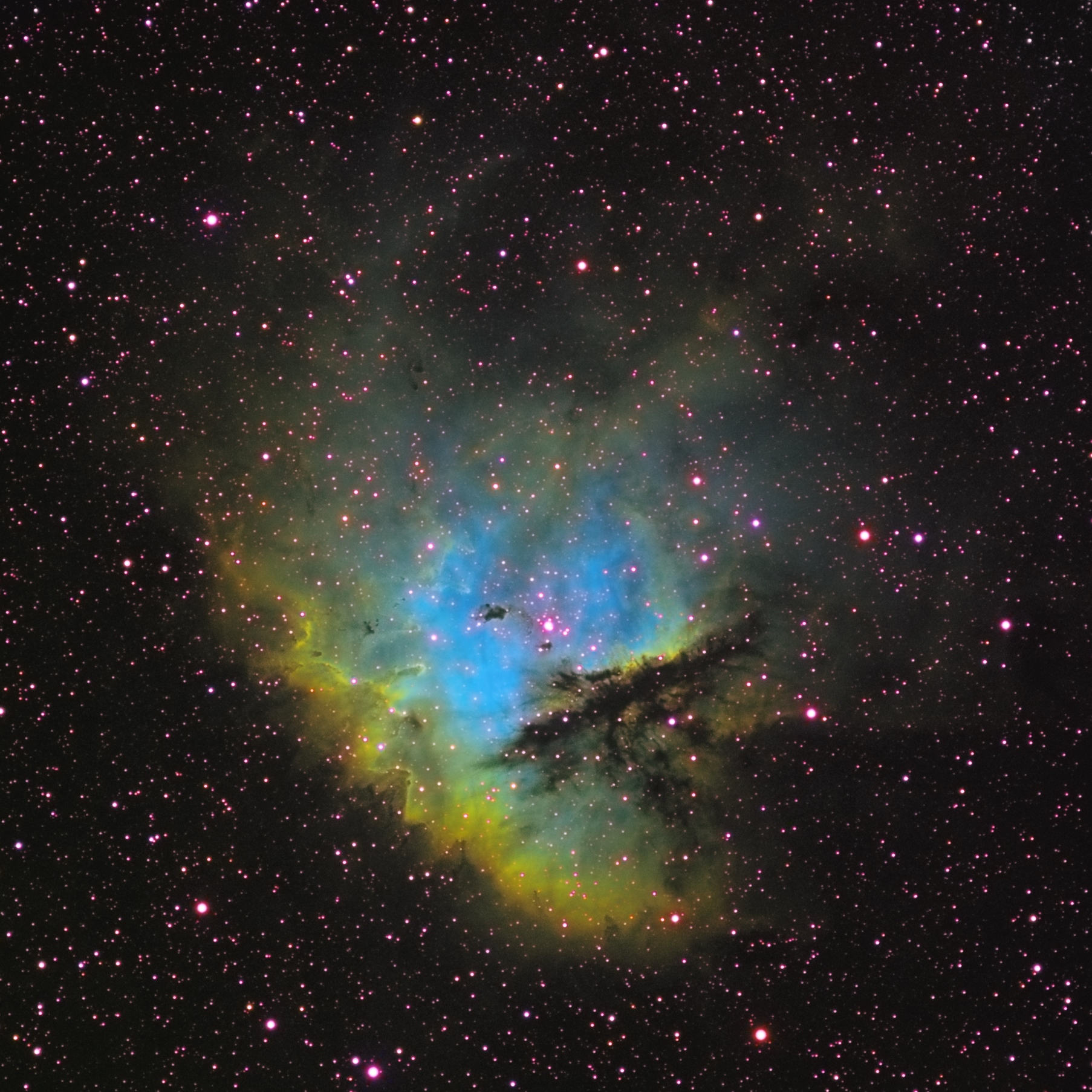Pacman Nebula (NGC 281) in Narrowband
Camera: Starlight Xpress SXVF-H16 with FLI CFW-2-7 Filter Wheel
Mount: Losmandy G-11/Gemini
Scope: Astro-Physics Starfire AP130 EDF
Colors: Ha:O3:S2
Exposure Time: Over 14 hrs
Post-Production: MaxIm DL, CCDStack, PixInsight, and Photoshop CS3
Hi all. This image is a narrowband version of the Pacman Nebula, designated NGC 281, in the constellation Cassiopeia. The image is a false color version that is intended to illustrate the presence of particular emission frequencies within the nebula. The image consists of three separate images: one in the Sulfer II emission frequency (mapped to red), one in the Hydrogen-Alpha emission frequency (mapped to green), and one in the Oxygen III emission frequency (mapped to blue). This color mapping scheme is typically called the Hubble Pallette because many of the images taken by the Hubble Space Telescope have been presented in this color combination. The nebula was discovered in August 1883 by E. E. Barnard, who described it as "a large faint nebula, very diffuse." The multiple star HD 5005, also called ?1, was discovered by S. W. Burnham. It consists of an 8th-magnitude primary with four companions at distances between 1.4 and 15.7 arcseconds. There has been no appreciable change in this quintuple system since the first measurements were made in 1875. The nebula is visible in amateur telescopes from dark sky locations. (Some text from Wikipedia.com).

 Sean Olson Design
Sean Olson Design